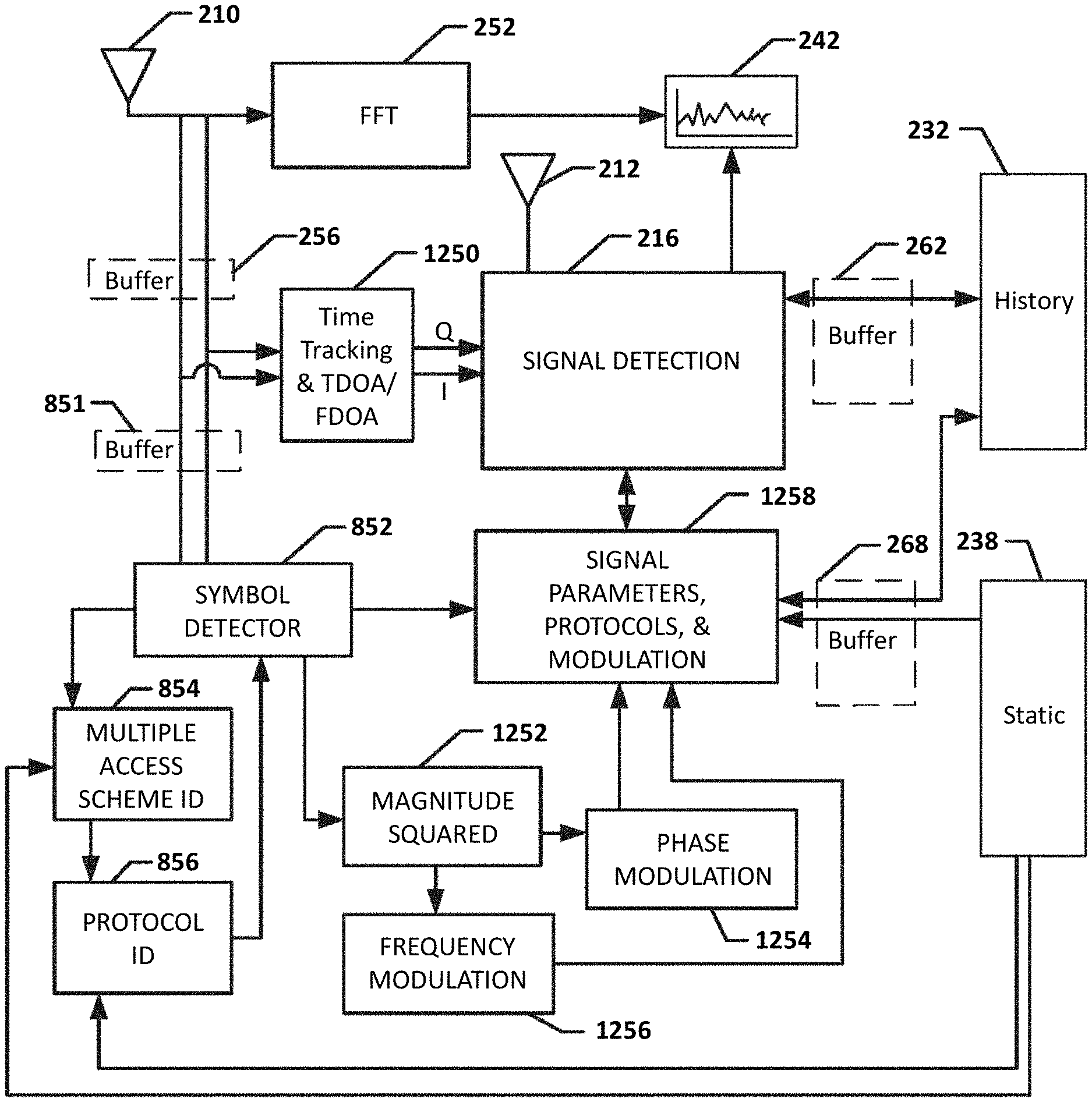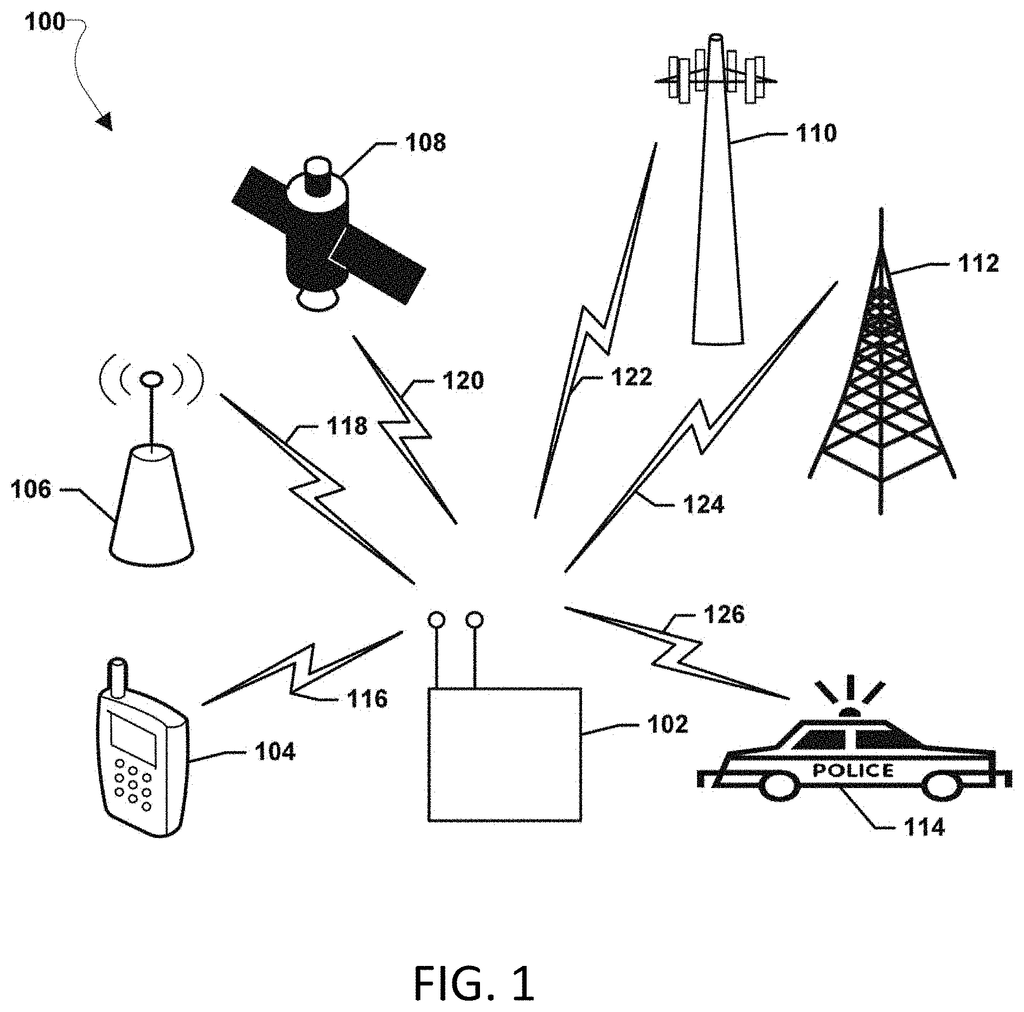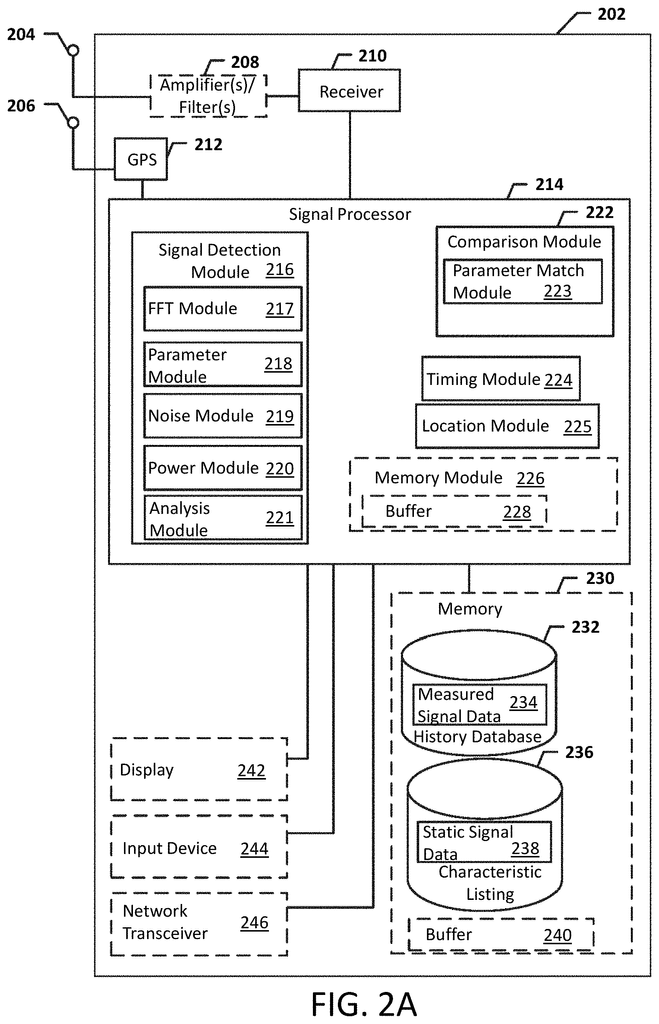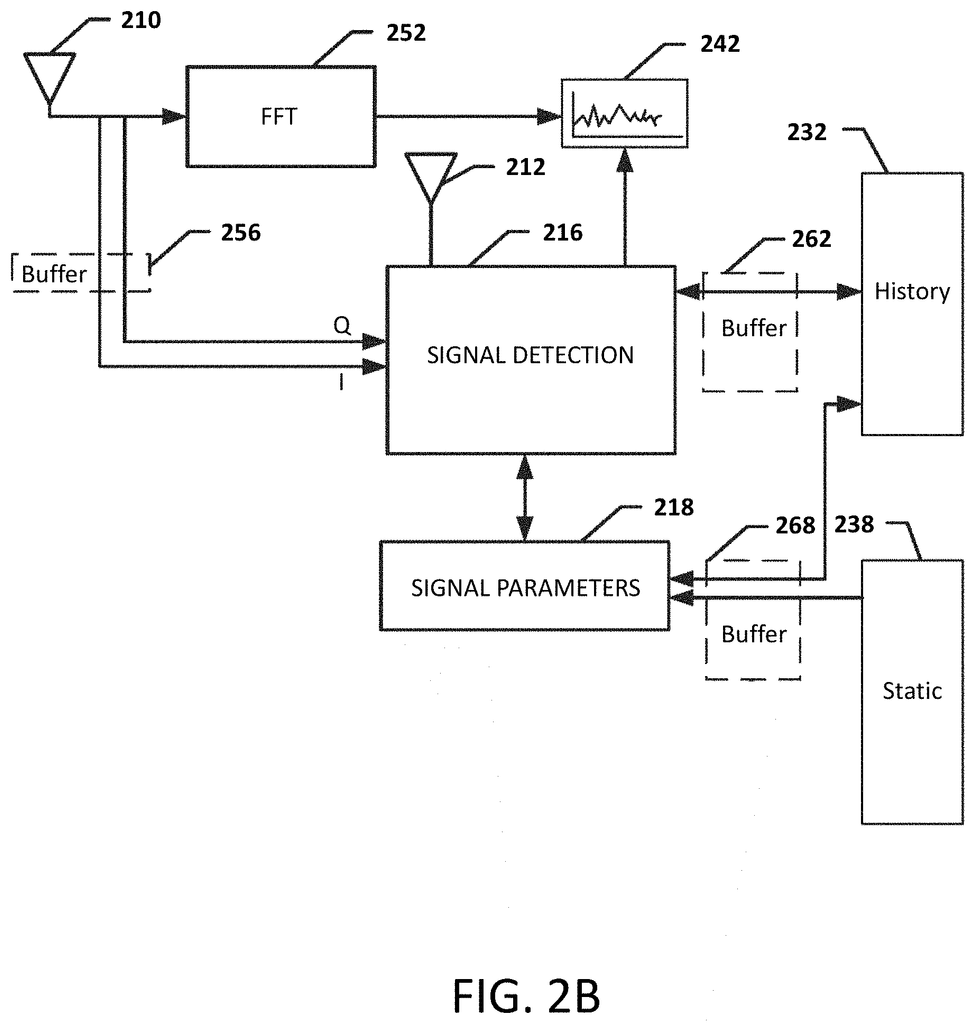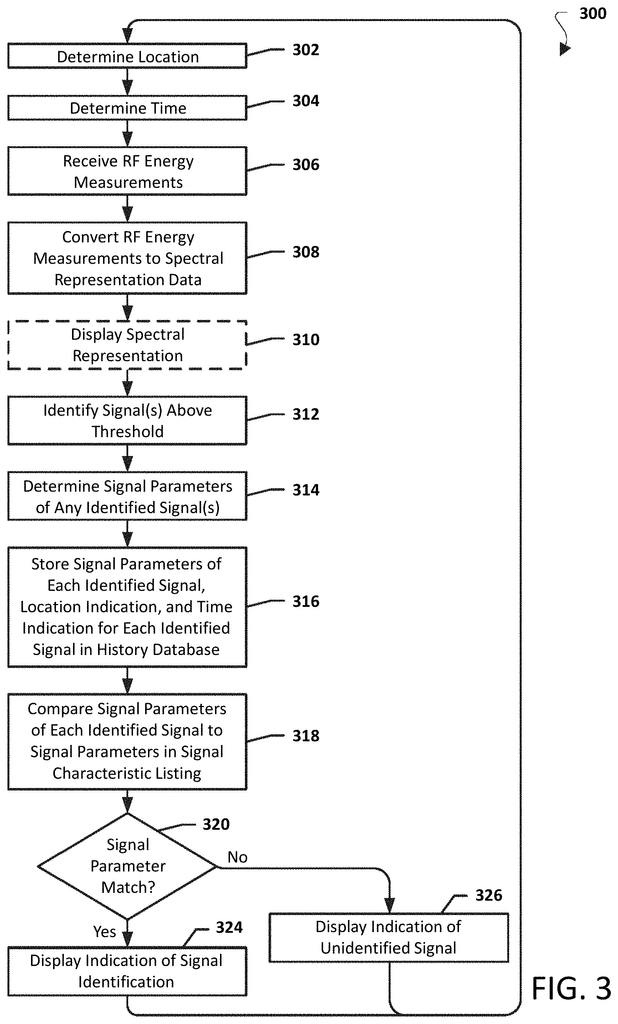Invented by Ronald C. Dzierwa, Daniel Carbajal, Digital Global Systems Inc
Electronic spectrum management involves the allocation, assignment, and coordination of frequencies for different wireless communication systems. This includes everything from mobile networks and satellite communications to radio and television broadcasting. Traditionally, spectrum management has been a complex and time-consuming process, requiring manual intervention and coordination between multiple stakeholders.
However, advancements in technology have paved the way for the development of systems, methods, and devices that streamline and automate spectrum management processes. These solutions leverage databases and automated reports to provide real-time information on spectrum availability, usage, and interference, enabling more efficient and effective spectrum management.
One of the key drivers for the market growth is the increasing demand for wireless communication services. The proliferation of smartphones, tablets, and other connected devices has led to a surge in data consumption, requiring additional spectrum resources to support the growing traffic. As a result, telecommunication companies and government agencies are investing in advanced spectrum management solutions to optimize spectrum utilization and ensure seamless connectivity.
Moreover, the rise of emerging technologies such as 5G, Internet of Things (IoT), and autonomous vehicles is further fueling the demand for efficient spectrum management. These technologies rely heavily on the availability of spectrum resources to deliver high-speed connectivity, enable massive machine-to-machine communication, and support reliable and low-latency communication for autonomous vehicles. As a result, the need for systems, methods, and devices with databases and automated reports for electronic spectrum management is expected to witness significant growth.
Furthermore, regulatory bodies and government agencies are increasingly focusing on spectrum management to ensure fair and efficient allocation of frequencies. With limited spectrum resources available, it is crucial to optimize spectrum usage and minimize interference between different wireless systems. Advanced spectrum management solutions equipped with databases and automated reports provide real-time insights into spectrum usage, enabling regulatory bodies to make informed decisions and enforce spectrum policies effectively.
The market for systems, methods, and devices with databases and automated reports for electronic spectrum management is highly competitive, with several key players operating in the industry. These companies offer a wide range of solutions, including spectrum monitoring and analysis tools, database management systems, and automated reporting platforms. They cater to various industries, including telecommunications, broadcasting, aerospace and defense, and public safety.
In conclusion, the market for systems, methods, and devices with databases and automated reports for electronic spectrum management is witnessing significant growth due to the increasing demand for wireless communication services, the rise of emerging technologies, and the focus on efficient spectrum allocation. As the demand for spectrum resources continues to grow, the need for advanced spectrum management solutions equipped with databases and automated reports will become even more crucial for industries and government agencies.
The Digital Global Systems Inc invention works as follows
Systems and Methods are disclosed for providing at lease one report related to a wireless communication spectrum.” The device can be operated for wideband scanning; it can detect and measure the signal transmitted by at least an emitter device autonomously and create signal data. It can analyze the signal data near-real-time and produce analyzed data.
Background for Systems, methods and devices with databases and automated reports for the electronic spectrum management
1. “1.
The present invention is a spectrum management and analysis system for radio frequency signals. It is more specifically for identifying and storing signals and devices automatically, comparing data from multiple devices, and automatically creating reports for wireless communication spectrum.
2. “2.
Generally, the prior art is to provide wireless communication spectrum management in order to detect devices for managing space. Spectrum management is the process of regulating radio frequency usage to maximize efficiency and social benefit. The fact that there are so many devices emitting wireless signals at different frequencies, and with different standards of technology, is a problem in managing spectrum effectively. With the various regulations around spectrum usage, effective spectrum management is difficult and can only be achieved over time.
Another challenge to effective spectrum management is that spectrum demand continues to grow despite the limited amount of spectrum available. In recent years, wireless technologies have grown exponentially. Spectrum has therefore become a valuable asset that needs to be used efficiently. “Systems and methods must be developed to manage and optimize spectrum usage.
Most spectrum management devices can be divided into two main types. The first is a spectrum analyzer, where the device is fitted with a scanner. The receiver is designed to give spectral data for a limited window of frequencies that are related to a particular and limited communication standard. These narrowly tailored devices have problems as the cellular standard changes and/or spectrum usage changes impact spectrum space for these technologies. These narrowly tailored devices are too complex to modify, and the hardware and software changes become difficult. This leads to the purchase of a completely new device. This type of device can only be used for a limited purpose and cannot meet the needs of spectrum management.
The second type of spectrum management device uses a method that is difficult to use and requires expensive equipment. To achieve a comprehensive spectrum management view, and to complete all necessary tasks, this device becomes a conglomerate software and hardware devices which are both difficult to use and hard to move from one place to another.
The current spectrum management device is not able to handle the following problems: “There may be additional problems with the spectrum management device, but at least four are major ones.
Examples of prior art documents that are relevant include:
U.S. Pat. No. No. 5,548,809 – “Spectrum Sharing Communications System and System for Monitoring Available Spectrum” Paul H. Lemson is the inventor. The invention of Paul H. Lemson, filed on Jul. 15, 1992, is a mobile radio communication network that includes a system to allocate one or more transmission frequencies to the network in order to avoid the network interfering with the received signals of a radio system incumbent. The allocating system can be equipped with a device that receives and monitors information indicative of the location and presence of incumbent radio stations. Signal level monitoring systems monitor signals from existing radio stations in order to determine their frequency and degree of RF separation, relative to a monitoring device of the monitoring system. The monitoring system consists of monitoring antennas, spectrum analyzers, devices for controlling spectrum analyzers, and devices for processing and correcting data produced by spectrum analyzers. The invention is capable of displaying the interference threshold and average strength.
U.S. Pat. No. No. 8,175,539 titled?System for managing a frequency band shared by multiple signals? Diener et. al. filed on Dec. 22, 2010 describes a method, a software, and functions related to managing activity within a RF-band that is shared by multiple signals, both in terms of frequency and timing. The RF energy is captured by one or more devices, locations, or regions in a particular region. Signals can be detected by sampling a part of the frequency band or the entire band at regular intervals. The band’s signal pulse energy is detected, and used to classify the signals according to their type. Spectrum intelligence (also known as spectrum intelligence) is used to take actions in a device, or network of devices, to optimize the simultaneous use of the spectrum band with other signals. Spectrum intelligence can be used by a network administrator or device user to suggest possible actions, or automatically trigger actions on a network or device to maintain desired performance.
U.S. Pat. No. No. 6,134,445 – Wireless terminal for measuring signal propagation properties? By inventors Gould et. al., filed July. The patent application dated 24 1997 discloses a wireless device that can be used as a telecommunications tool and a wireless testing tool. The terminal includes a first transducer that converts a signal from a base station into a signal for transmission; a wireless transducer capable of sending the signal to the remote base station, a receiver that can receive a number of signals coming in; a transducer which converts one of those signals into a signal for conversion; a visual screen; and a terminal processer capable of determining the power levels for the various incoming signal and simultaneously displaying the level of power for each signal. The invention is aimed at providing a test tool that can be used in real time. Wireless signals are attenuated by office buildings.
U.S. Pat. No. No. 7,162,207 – ‘System, apparatus, methods and computer programs for producing signals to test radio frequency communication devices. By inventors Kursual, and others, filed June. The invention of 21 2004 discloses a signal-producing system, apparatus, method and computer program. The system includes a non-real time domain that includes a data generation unit for supplying a temporally interrupted data stream. This data stream contains signal waveforms and control data defining the characteristics of a transformation from the signal data to a RF signal. The temporally-discontinuous data stream is fed to a transformer, which converts it into a continuous temporally-discontinuous datastream. This provides a transformation from the non-real time domain to a real time domain. The real-time domain also includes a radiofrequency unit that uses the temporally continuously signal data stream as an input and converts it from the waveform data to the radio frequency test signals according to the control information.
U.S. Pat. No. No. 8,326,240, entitled?System for specific emission identification? The patent application by Kadambe et. al. filed on Sep. 27, 2010 describes an apparatus that can identify a specific emitter when there is noise or interference. It includes (a) sensor that senses radio frequency signals and noise data (b) reference estimation unit that estimates a signal reference relating to signal transmitted from one emitter (c) feature estimation unit that generates one or multiple estimates of one feature based on the reference signal, the signal sent by the emitter and (d) emitter identifier that identifies the signal transmission by The apparatus can also include an SINR improvement unit configured to increase the SINR before the reference estimation unit estimates a reference signal.
U.S. Pat. No. No. 7,835,319 – ‘System and method of identifying wireless devices by pulse fingerprinting and sequencing analysis? The patent application by Sugar filed on May 9, 2007 discloses a method for identifying wireless devices from the received radio frequency energy. This includes, in particular, devices emitting frequency-hopping spread spectrum. The received RF energy is used to generate pulse metric data that represents the characteristics of this energy. Pulses are divided into groups according to their pulse metric information, so that each group contains pulses with similar pulse metric values. The partitioning process is used to identify the sources of wireless signals. Iteratively subdividing groups into subgroups is the partitioning process. This continues until all subgroups are determined to contain pulses from a single origin. Each iteration is based on a different set of pulse metric values. The output data (e.g. a device name) identifies the source of wireless signals in any subgroup determined to have pulses coming from a single point.
U.S. Pat. No. No. 8,131,239 titled?Methods and apparatus for remote radio-frequency device detection? The patent application Walker et. al. filed on Aug. 21, 2007 describes methods and apparatus to detect the presence of electronic communication devices such as cellular telephones. A complex RF signal is transmitted in a target region, and the nonlinear reflectance signals received by the target region are processed to determine a response measurement. The response measurement can be compared with a predetermined filter response profile in order to detect a radio device that has a filter response characteristic corresponding to the response measurement. In some embodiments the predetermined filter profile includes a band-edge profil, so comparing the measurement to a filter response profile also involves comparing it to the band-edge to detect a radio device with a band-edge characteristic. The invention is intended to be useful for detecting hidden electronic equipment.
U.S. Pat. No. No. 8,369 305 for “Correlating multiple detections without a unique identification of wireless devices” by inventors Diener, et al., filed Jun. The 30th of 2008 describes a plurality first devices receiving wireless transmissions at different locations within a region that may have multiple emitting target devices. Identifier data are then generated. The identifiers associated with the received emissions from multiple first devices can be grouped into a single cluster record, which could represent the same target detected by multiple devices. The data is stored as a plurality cluster records based on identifiers associated with the received emissions from multiple first devices over time. The cluster records over time are analyzed to correlate the detections of targets across multiple first devices. It is designed to reduce disruptions from devices that use the same frequency, and to protect data.
U.S. Pat. No. No. 8,155,649 is for a?System and method for classifying communication signal in a dynamic access system? The patent application by McHenry et. al. filed on August 14, 2009 discloses systems and methods for dynamic spectrum (DSA) within a wireless network. A DSA-enabled devices can sense spectrum usage in a particular region and select one or several communication channels based on that detected spectrum usage. Devices may also detect other DSA enabled devices that they can join to form DSA networks. A DSA network can monitor spectrum usage by cooperative and noncooperative devices to dynamically select the channels for communication, while avoiding or decreasing interference with other devices. A DSA network can include detectors like a TV detector or radar detector. It could also be a narrow-band, wide-band, wireless microphone, or radar detector.
U.S. Pat. No. RE43,066 – “System and method of reuse of communication spectrum for fixed and portable applications with an efficient method to minimize interference” Mark Allen McHenry filed on Dec. 2, 2008. He describes a communication system network that allows secondary spectrum use without interference. The system employs a modulation technique to measure background signals, which eliminates self generated interference. It also identifies secondary signals to all primary users using on/off modulation. This allows easy resolution of interference complaints. The system uses gain probes with high processing that allow propagation measurements to take place without causing interference to primary users. The system uses background signals to identify nearby receivers. It then modifies local frequency assignments in order to reduce interference from secondary systems due to nonlinear mixing interference, spurs, phase noise and out-of band transmitted signals. By analyzing the background signal amplitude, the system can infer a secondary node?s mobility and elevation (and thus its likelihood to cause interference). The frequency assignment for mobile or elevated nodes is more conservative than that of stationary nodes.
U.S. Pat. No. No. 7,424,268 titled?System and method for management of a shared frequency band? by inventors Diener, et al., filed Apr. The 22nd of 2003 discloses a method, software, and functions related to managing activity within an unlicensed band of radio frequencies that are shared by multiple signals in terms both frequency and timing. The band’s signal pulse energy is detected, and used to classify the signals according to their type. Spectrum intelligence (also known as spectrum intelligence) is used to take actions in a device, or network of devices, to avoid interference with other signals and to optimize the simultaneous use of a frequency band. Spectrum intelligence can be used by a network administrator or device user to suggest possible actions, or automatically trigger actions on a network or device to maintain desired performance.
U.S. Pat. No. No. 8,249 631 for a?Transmission Power Allocation/Control Method, Communication Device and Program? Ryo Sawai is the inventor, and filed on Jul. The method of allocating transmission power for a second service that makes secondary use of spectrum allocated to a primary service is taught in the 21st century. It can be applied to any node capable to communicate with another secondary usage node. The method calculates the interference power that is acceptable for two or multiple second communication service when they are operating and then allocates transmission powers to these two or several second communication services.
Click here to view the patent on Google Patents.
